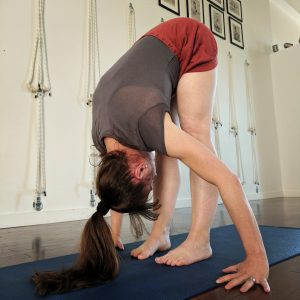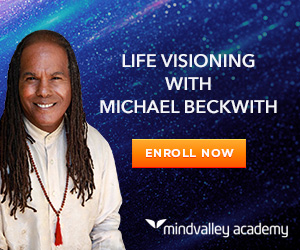When I practice Yoga, I feel like I literally tap into a new language. This ‘language of asana’ helps me to embody the physical vessel in which I reside…wait a minute…whaaaaaat? Yes, you read that correctly. It’s an intense statement and if you were to have read it to me before my indoctrination, I would have no doubt looked back at you with a blank stare.
The idea that movement could be simultaneously joyful, creative, analytical, philosophical, therapeutic, and self-illuminating was foreign to me before I discovered Yoga. If at the time, I hadn’t been desperately looking to alleviate chronic pain, I’d likely never have known how rich a movement practice could be. Thankfully, a window of opportunity presented and by seeking out sensitivity and awareness (in areas as remote and seemingly insignificant as my small toe), I was able to access a whole world of possibility. I was, and remain, captivated by Yoga.
Not only does this new vocabulary inform my practice, but it continuously inspires my teaching. This is why for me, practice and teaching always go hand in hand. When I teach, I share ‘my take’, my understanding with my students.
Without the tangibility of exploration and self-study that comes from my practice, my teaching would no doubt, lack freshness and sincerity. By sharing my knowledge, passion, and playful curiosity, I aim to empower students to cultivate their own narrative, their own way of relating, digesting and experiencing the teachings.
Despite the inextricable link between practice and teaching, more often than not one’s relationship with Yoga will plateau (by ‘plateau’ I mean a period of little or no growth, physical or otherwise). For most people, this results in a practice which feels lacklustre.
I confess, I was NOT anticipating my relationship with yoga to take this turn and when it happened, the possibility of being ‘bored’ of yoga, totally freaked me out. How could I lose interest in something that played such a major role in defining me???

I’ve since come to believe that any serious, committed student of yoga will actually be well served by embracing this pivotal experience. It helped me to realize that my relationship to yoga is not dissimilar to any of my other relationships – it takes work and needs investment. The ‘honeymoon’ period where everything is new and exciting, doesn’t last forever and as long as I have tools for reviving the relationship and rekindling the spark, I can look forward to (and enjoy), the many perks of a healthy, meaningful, and long-term relationship – me and my mat.
So, how did I emerge from my relationship woes? Well, it was a deliberate process of unpacking, conceptualizing and reorganizing in my head what it really meant to be a lifelong student of Yoga. I remembered an adage from BKS Iyengar that I was often told in Teacher Training. [Side note: is it not amazing how you can know something for years but not really ‘get it’ until randomly, one day, it just clicks?!]
“Practice for your students; teach for yourself”.
It’s easy to argue that making time for your personal practice is self-indulgent, but this quote inspired me to develop a different outlook entirely. While there is clearly an element of service in the act of teaching, I’d say it’s also self-gratifying…whose ego doesn’t enjoy having ultimate authority? What about the congratulatory praise that comes from students who enjoy a resonating practice? In stark contrast, practice is a thankless task. It’s often tedious and laborious. At the same time (as I shared earlier), practice can be a well to draw from. It’s fuel for teaching and in my experience, it’s what best sets me up to serve my students with both integrity and compassion. If I feel uninspired or stale (in practice or in teaching), BKS Iyengar’s words now serve as a reminder to look honestly at how often I’m teaching and how often I’m practicing. It may, in fact, be time for a shift, a tipping of the scales.
Part of the appeal of Yoga as a lifelong pursuit is that it’s NOT a linear journey.
Sure, you can set certain goals and systematically work to achieve them, but in my experience, being too goal driven is akin to ‘tunnel vision’. I remember an experience with Sirsasana (headstand) that taught me this lesson well. I was working towards lifting up, independent from the wall and when I finally managed to do it successfully, I was elated. But… I couldn’t understand why sometimes I was able and sometimes I was not. Eventually, I recognized that what I practiced before headstand was hugely important. Certain sequences would, simply put, better prepare me than others. So the practices that left me unable to lift up into headstand, were they bad? No! Those practices were important for other reasons but because of my goal, I was blinded to the diversity of gifts being offered. Sure, I couldn’t lift into a headstand on that particular day, but was I aware that when it came to, for example, the backbends portion of the practice, they were some of my best? It’s that level of intimacy with the poses that today, feeds me – this is my ‘language of asana’.

Let’s consider another example: Adho Mukha Vrksasana (full arm balance). For most people, the initial aim is to get up and stand on your hands. In time though, getting upside down becomes almost superficial and the fruit of the pose is in refining, looking for balance and composure, finding meditation in action. There’s always some new aspect of the pose (or of the practice) to explore.
In teaching, there are similar complexities. As a newly-certified teacher, my aim might be to get my students safely into the shape of a pose. As my teaching experience grows, seeing my students assume yoga shapes may no longer be enough. Now, I’ll want to deliver an experience to my students, I’ll want to empower and inspire them to connect with themselves and with all that yoga has to offer.

My point is, whether it’s about teaching or practice, there is ALWAYS an opportunity to learn.
As a society, we like to compete and compare but ultimately we need to remember that ‘demonstrating a fancy backbend’ and ‘the embodiment of Yoga’ are not one and the same(!).
If you desire it to be, Yoga can be more than ticking boxes. To me, more than anything else, Yoga has become a vehicle for self-study. The relationship I’ve cultivated is about practicing despite adversity; it’s been about finding humility, developing empathy, and fostering connection – connection within and connection beyond.
When I feel uninspired or stale, whether in my own practice or teaching, I ask myself:
- Am I putting myself in situations that challenge my nature or ones that reinforce existing patterns?
- Am I approaching the mat with an open mind or preconceived notions?
- Am I studying with a teacher that can offer me perspective?
Having given myself time and permission to meaningfully and honestly reflect on these questions confirmed for me that my mat and I, we’re in it for the long haul. I don’t want a yoga fling. I want the ups and downs, the ins and outs, of an intimate and long-term relationship.
“I know yesterday’s poses, but when I practise today I become a beginner. I don’t want yesterday’s experience. I want to see what new understanding may come in addition to what I had felt up to now. In this quest, my body is my bow, my intelligence is my arrow, and my target is my self.”
– BKS Iyengar
Enjoyed reading this article? Consider supporting us on Patreon. $2 donation will allow us to publish many more amazing articles about yoga and mindfulness.

Illustration by Valeria Ko.


